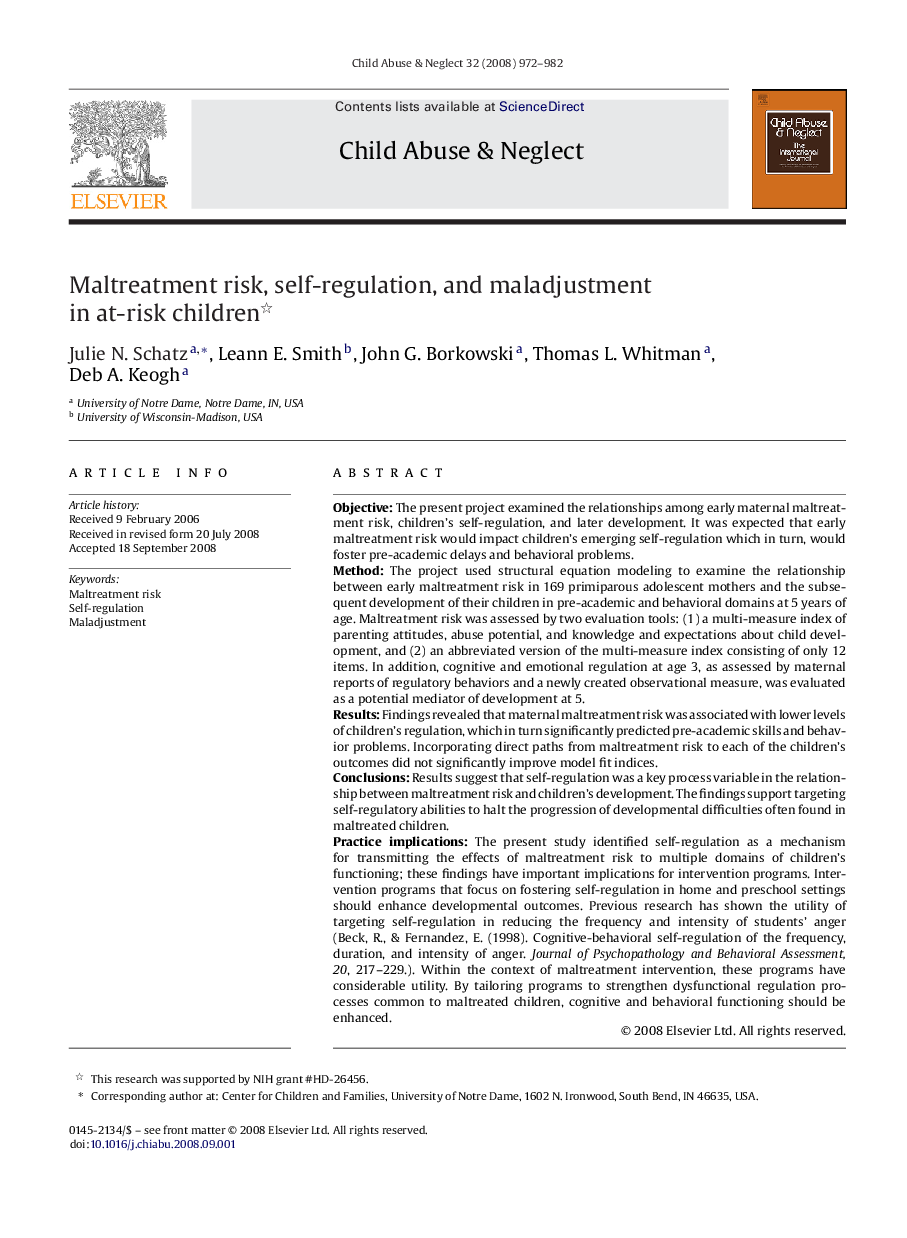| Article ID | Journal | Published Year | Pages | File Type |
|---|---|---|---|---|
| 345499 | Child Abuse & Neglect | 2008 | 11 Pages |
ObjectiveThe present project examined the relationships among early maternal maltreatment risk, children's self-regulation, and later development. It was expected that early maltreatment risk would impact children's emerging self-regulation which in turn, would foster pre-academic delays and behavioral problems.MethodThe project used structural equation modeling to examine the relationship between early maltreatment risk in 169 primiparous adolescent mothers and the subsequent development of their children in pre-academic and behavioral domains at 5 years of age. Maltreatment risk was assessed by two evaluation tools: (1) a multi-measure index of parenting attitudes, abuse potential, and knowledge and expectations about child development, and (2) an abbreviated version of the multi-measure index consisting of only 12 items. In addition, cognitive and emotional regulation at age 3, as assessed by maternal reports of regulatory behaviors and a newly created observational measure, was evaluated as a potential mediator of development at 5.ResultsFindings revealed that maternal maltreatment risk was associated with lower levels of children's regulation, which in turn significantly predicted pre-academic skills and behavior problems. Incorporating direct paths from maltreatment risk to each of the children's outcomes did not significantly improve model fit indices.ConclusionsResults suggest that self-regulation was a key process variable in the relationship between maltreatment risk and children's development. The findings support targeting self-regulatory abilities to halt the progression of developmental difficulties often found in maltreated children.Practice implicationsThe present study identified self-regulation as a mechanism for transmitting the effects of maltreatment risk to multiple domains of children's functioning; these findings have important implications for intervention programs. Intervention programs that focus on fostering self-regulation in home and preschool settings should enhance developmental outcomes. Previous research has shown the utility of targeting self-regulation in reducing the frequency and intensity of students’ anger (Beck, R., & Fernandez, E. (1998). Cognitive-behavioral self-regulation of the frequency, duration, and intensity of anger. Journal of Psychopathology and Behavioral Assessment, 20, 217–229.). Within the context of maltreatment intervention, these programs have considerable utility. By tailoring programs to strengthen dysfunctional regulation processes common to maltreated children, cognitive and behavioral functioning should be enhanced.
